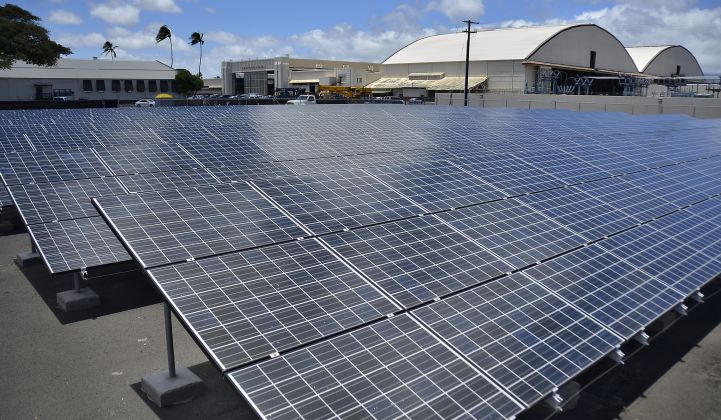It may be neither a widespread phenomenon nor easy to achieve, but people can actually make money on microgrids today.
The localized, islandable networks of interconnected loads and energy resources have long eluded commercialization, in part because they are hard to commoditize and extract revenue from. The model of microgrids as service, though, has started to yield success, as three companies attested at GTM’s Grid Edge World Forum conference Wednesday.
Under the microgrid-as-service model, the customer doesn’t have to foot the bill for all of the expensive pieces that go into the system. Instead, a provider does that and extracts regular payments for the services desired.
Multiple value streams make it easier to pencil out, but one in particular stands out.
“Transmission and distribution deferral for us on microgrids is going to be huge,” said Jason Handley, director of smart grid technology and operations at Duke Energy. “Right now that’s our only regulatory mechanism to actually get projects approved.”
He was referring to microgrids within his company's service territory, where Duke has three operational systems. The T&D deferral mechanism made it possible to move forward with a recently built DC-only microgrid, which installed solar and zinc-air batteries at a remote mountaintop communications tower.
The localized generation will allow the utility to save money that would have gone to maintaining a lengthy feeder through the wilderness of the Great Smoky Mountains.
The same calculus applies to line upgrades to handle more current.
“If you have a very long distribution line and it’s only overloaded by a small amount, it makes a lot more sense to put in an energy storage system to get rid of those few peaks during the year,” said Kristen Anand, senior sales and applications engineer at storage vendor Younicos.
Younicos helped serve that role with a storage system outside Denver, which additionally provides a Panasonic operations center with 24/7 resilience and integrates distributed PV generation onto the feeder.
Outside of its regulated territory, Duke has developed two microgrids in partnership with Schneider Electric, which provide resilient power to Schneider’s Boston campus and a public safety complex in Montgomery County, Maryland.
Schneider assembles the customer, the software and the equipment, while Duke puts the weight of its name behind the financing and operations and maintenance over a long-term PPA.
“We’re helping each other leverage our strengths,” Handley said.
Down the road, microgrids offer a new source of revenue the utility can draw on as the power business moves away from per-kilowatt-hour revenue, he added.
Microgrids offer a special value for a utility like Duke, which controls distribution and generation. If an outage occurs on a section of grid with a microgrid in it, Duke could potentially isolate the faulty wire and power the isolated segment from the microgrid.
The methods of paying for that would need to be figured out with regulators. It would be even more complicated to monetize for a third-party provider.
Over in Texas, Enchanted Rock has built up 130 megawatts of contracted, natural-gas-driven microgrids. That scale has helped the company overcome the challenges of this product, which often vary considerably from case to case.
Enchanted Rock has leveraged its scale to negotiate more favorable prices with upstream suppliers, allowing it to bring down installed costs, said Founding Partner and Managing Director Thomas McAndrew.
Managing several microgrids in a given region makes it more economical to deliver rapid response servicing for the systems, he added.
“It looks more like FedEx routing than maintenance on a power plant,” McAndrew said.
Enchanted Rock’s experience shows that, when the value proposition is right, microgrids can make financial sense right now without subsidies.
“If the industry is going to rely on subsidies and incentives, it’s not a scalable industry and it will go away,” he said. “Our focus has always been on making the microgrids financeable without subsidies...and if you do get some type of subsidy on top of it, that’s gravy.”
Policy incentives for solar exist throughout the nation, and energy storage incentives are popping up in a handful of states.
Microgrids can incorporate either of those assets, but microgrid-specific incentives haven’t yet materialized. That means the industry can chart a course without them, potentially avoiding the boom-and-bust pattern that accompanies reliance on government disbursements.



